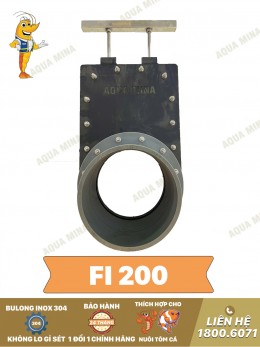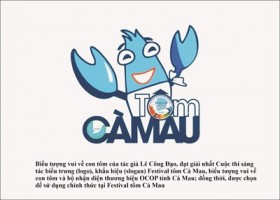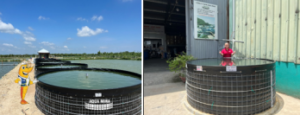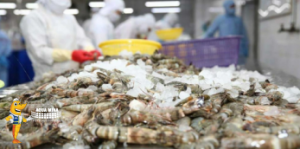Common Diseases in Koi Fish
When you understand the common diseases affecting koi, it’s important to investigate their causes, prevention methods, and simple yet effective treatment options.

1. Causes of Fungal and Other Diseases in Koi Fish
Water Quality: A fluctuating pH level, either below 3 or above 9, can contribute to disease development.
Water Temperature: Extremely low or high temperatures can trigger illness.
Polluted Pond Conditions: Excess ammonia, leftover food, and organic waste can lead to water pollution, promoting fungal and bacterial growth that harms koi.

2. Common Fungal Diseases in Koi Fish
a) Cotton Wool Disease
This disease is easy to identify and frequently encountered in koi farming. Infected koi exhibit white or gray cotton-like patches on their bodies or gills. In severe cases, these patches may turn red, green, or brown.
Cotton wool disease commonly occurs at low temperatures (around 0°C) or very high temperatures (34–35°C). It spreads rapidly throughout the pond, infecting all koi.
b) Gill Rot Disease
This disease, caused by the fungi Branchiomyces sanguinis and Branchiomyces demigrans, targets the gills of koi fish.
Symptoms include mucus on the gills, making it difficult for the fish to breathe. Affected koi frequently rise to the water's surface to gulp air. In severe cases, the gills rot completely, leading to death. Gill rot is also highly contagious, spreading through the water to infect other fish.

c) White Spot Disease
Also known as ich, this disease is commonly observed in koi farming. Infected fish develop visible white spots on their bodies, which then spread.
This condition causes itching, making the fish rub against each other or the pond walls. In severe cases, the fish may become lethargic and lose their sense of direction.
d) Fish Lice and Anchor Worms
These are common crustacean parasites that affect koi and other freshwater fish.
Fish Lice: These parasites attach to the koi's skin, causing wounds and ulcers as they feed.
Anchor Worms: These create red sores that develop into thread-like growths on the fish. They burrow into the fish’s body through the scales, gills, or mouth, anchoring themselves and causing severe damage.
e) Fin, Tail, and Body Rot
Symptoms include inflammation, scale shedding near the tail, and rotting of the flesh. Severely affected fish may show blood accumulation at the tail base and frayed fins resembling brushes.

3. Treatment of Fungal Diseases in Koi Fish
Here are three methods to treat koi fish diseases effectively:
Method 1: Using API Pimafix
Contains 1% Pimenta racemosa extract, effectively treating fungal infections without altering water pH or clarity.
Dosage: Add 5ml for every 38 liters of water daily for 7 days. After treatment, replace 25% of the water.

Method 2: Using Tetra Japan Medicine
Dosage:
Day 1: Add 1–2g of Tetra Japan for every 100 liters of water, depending on severity.
Day 2: Add 1g for every 150 liters of water.
Combine with salt baths (5kg of salt for 1,000 liters of water) and maintain the temperature at around 30°C.
Active ingredient: Sodium Nifurstyrenate, a strong antibacterial agent that treats gill rot, white spot disease, and other bacterial infections.
Method 3: Using Bionock No. 2
Dosage: Add one drop per 10 liters of water. Replace 30% of the water every 48 hours and repeat until the fish recover. Maintain a water temperature of 30–32°C for faster results.
Note: Do not mix medications during treatment.
Disease Prevention for Koi Fish
Maintain a pH level between 7.0 and 7.5.
Keep water temperature between 20–28°C.
Avoid overfeeding and remove excess food.
Install a siphon system to remove waste regularly.
Use microbial products to treat water.
Provide high-quality food and vitamin supplements to boost immunity.
By understanding these common diseases, their causes, and treatment methods, you can take timely action to ensure the health and well-being of your koi fish.

Contact AQUA MINA for consultation and supply of aquaculture round tanks and aquaculture equipment for high-tech shrimp farming.
- Address: 685 National Highway 1A, Binh Hung Hoa Ward, Binh Tan District, Ho Chi Minh City
- Phone: 1800 6071 (Toll-free hotline)
- Email: sales@aquamina.com.vn or oversea@aquamina.com.vn
Aqua Mina's distributor in Japan:
REX INDUSTRIES CO., LTD
- Address: 1-9-3 Hishiya-Higashi, Higashi-Osaka 578-0948 JAPAN
- Email: kimakubo@rexind.co.jp
- Phone: +81-(0)72-961-9893
- Website: http://www.rexind.co.jp/e/

Ngày đăng : 23/11/2024
2187 View
Other Articles
Vietnamese shrimp and catfish choose a sustainable path in global competition
End-of-Season Shrimp Prices Reach Record Highs
Norway – Russia Reach Barents Sea Fisheries Agreement for 2026
Cà Mau strengthens traceability to enhance the competitiveness of the shrimp industry.
Cold stress: Effects on the plasma characteristics of whiteleg shrimp.
A new breakthrough in the prevention of diseases caused by the microsporidian parasite EHP in shrimp farming
Vietnam’s shrimp export outlook in the first quarter of 2026 continues to face heavy pressure from tariffs.
New England’s shrimp fishery to shut down for the long haul after years of decline
Crab exports to the United States account for more than 80%.
Thailand sets a target to increase shrimp production to 400,000 tons by 2026.
CTU-RAS: Recirculating Shrimp Farming for Sustainable Development
Vietnamese aquatic products reach new markets



















.jpg)